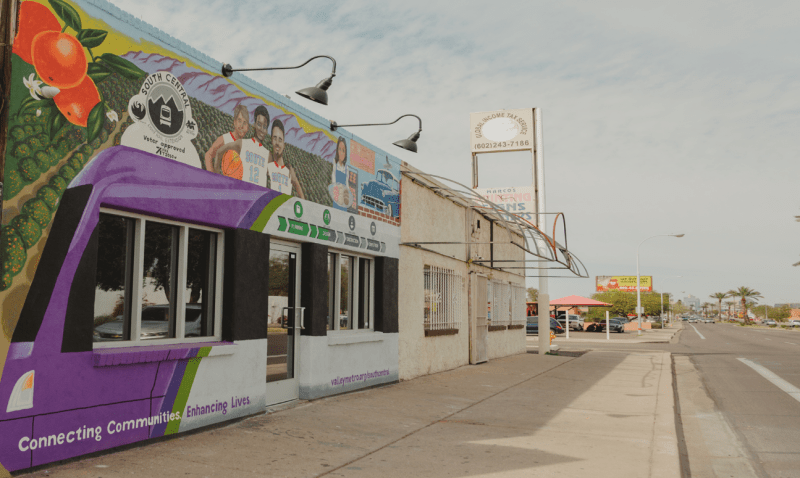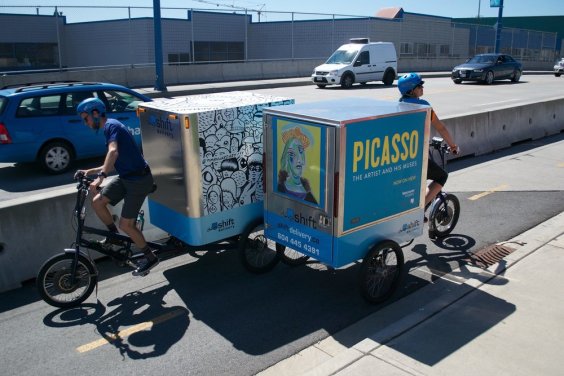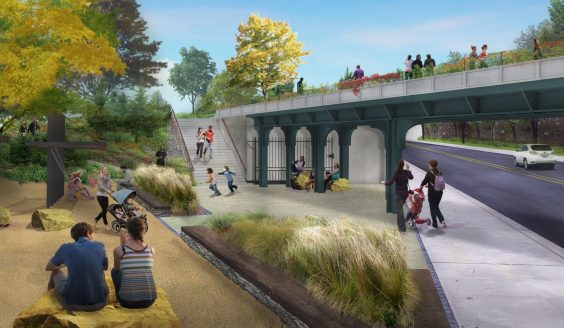The Trump administration has slowed the release of federal transit grants to such a crawl that expansion projects in the works for years are now in jeopardy.
Under U.S. DOT Commissioner Elaine Chao, the Federal Transit Administration is dragging out the disbursement of expansion grants and threatening to stop releasing capital funds to transit agencies altogether.
The FTA’s stinginess is creating uncertainty and throwing the future of transit expansion projects into doubt. U.S. Representative Peter DeFazio (D-OR) recently called the slowdown “a bureaucratic nightmare, designed to create endless delays and massively increased costs for communities looking to solve congestion issues with new transit options or by expanding existing transit systems.”
At issue is the release of funds that have already been appropriated by Congress for the FTA’s Capital Investment Grants program. CIG has three components: New Starts and Small Starts, which fund transit expansions, and Core Capacity, which funds upgrades to existing routes. Together, the three grant programs were funded with $2.6 billion in the Fiscal Year 2018 budget.
Fiscal Year 2018 ends on September 30. But so far, the FTA has only released $1.3 billion of the $2.6 billion that was appropriated. Transit agencies now perceive a risk that the funds will be left unspent by the FTA and never reach them.
During this fiscal year, the FTA has approved only three transit projects for construction grants. And two of those — Caltrain Electrification and Maryland’s Purple Line — only advanced after concerted public pressure campaigns. Another eight projects have received approvals for earlier stages of the funding process.
By comparison, in Fiscal Year 2016, the final year of the Obama administration, the FTA gave seven projects the go-ahead for construction grants (known as full funding grant agreements). An additional 22 were recommended for other grants or benchmarks on the path to full funding.
If the Trump DOT gets its way, the pipeline will shrink even more.
In its recommendations for Fiscal Year 2019 [PDF], released in February, the FTA said capital funding should be limited to projects that already have full funding grant agreements in place. That would amount to $1.046 billion. (The FTA’s recommendations for Fiscal Year 2017 [PDF] — submitted when Obama was still in office — asked for $3.5 billion for these programs.)
Projects in the pipeline but not yet approved for full funding grant agreements include Phoenix’s South Central Light Rail, Los Angeles’s Purple Line Extension, Minneapolis’s Orange Line Bus Rapid Transit, Durham-Orange Light Rail, New York City’s Second Avenue Subway Phase II, Milwaukee’s East-West Bus Rapid Transit, and Seattle’s Center City Connector, among others.
The FTA wrote in its 2019 recommendations (emphasis theirs):
For the remaining projects in the CIG program, FTA is not requesting or recommending funding…
Future investments in new transit projects would be funded by the localities that use and benefit from these localized projects.
In other words, the Trump DOT wants to stop federal funding for transit projects. It’s a threat this White House has made before.
Since Trump has taken office, Congress has appropriated funds for transit expansion even when the White House did not want to. Trump’s budget outlines call for slashing federal transit funding, but Congress has made relatively little adjustment to prior spending levels. In May, the House Appropriations Committee voted to fund transit capital grants at $2.6 billion again.
Under the law, 85 percent of the Fiscal Year 2018 transit capital grant budget — or $2.25 billion — must be allocated by December 31, 2019, a measure included at the insistence of several dozen U.S. representatives [PDF]. Any of the remaining $350 million that isn’t spent will still be available for four years, at which point it would go back into the treasury, according to an FTA spokesperson.
But by slowing down the grant process and injecting more uncertainty, the FTA can still wreak havoc for transit projects.
In Albuquerque, for example, the ART bus rapid transit project was built on the promise of FTA grants, but the city is still awaiting federal payments. The delay is causing political embarrassment for project backers — which may be the point.
Former Mayor Richard Berry, who championed the project, proceeded on the assumption that the city would receive $75 million in federal funds, based on a “letter of no prejudice” from the FTA in 2016. At the time, that was a pretty safe assumption. The Albuquerque Journal reported that “every city that had received such a letter from the FTA ended up getting the funding.”
But now the prospects are much more uncertain, even though the 2017 federal budget allocated $50 million to the project. The FTA has yet to release the funding through its Small Starts program.
Berry, whose term ended last year, is getting hammered by the press and new Mayor Tim Keller. “This notion that somehow we’re just waiting for guaranteed funds is factually inaccurate and it always was,” Keller told the Journal in March.
Local officials hoped they would receive the grant when Congress fully funded the “Small Starts” program in March. New Mexico’s congressional delegation has been lobbying the FTA to release the funds, so far with no success.
The FTA would only say that the project is “undergoing internal review.”
Clearly, partisan Republican resistance to transit is one factor at work. The party’s 2016 platform called for zeroing out federal transit funds. Chao, the wife of Senate Majority Leader Mitch McConnell, is an alum of the Heritage Foundation, which promotes the idea that transit funding is an inappropriate use of federal dollars.
Just this week, the FTA issued a memo (title: “What is a Federal Transit Project?”) which states that the agency “is holding this national online dialogue to provide stakeholders with the opportunity to share how the definition of a federal project may impact the timely and effective implementation of transit projects.” It may sound harmless and vague, but in the code of conservative ideology, the memo calls into question whether transit projects deserve federal funding.
DeFazio, the ranking member of the House Transportation and Infrastructure Committee, said the memo “looks like the Koch Brothers sent DOT their instructions.”
The lack of clear leadership at the FTA may also be a problem. The Trump White House has yet to appoint a permanent director for the agency, which is currently led by acting administrator Jane Williams. Past administrations have typically filled the position within a few months, but Trump has gone more than a year without doing so.
“This is very out of normal,” said Eric Eidlin, who worked at the FTA’s Bay Area office during the Obama administration and now does transit station planning for the city of San Jose. “The mechanisms within the agency are not working at their normal capacity.”
Whether the FTA finalizes funding agreements before the end of this fiscal year or not, the agency has already undermined local confidence in its transit grant programs.
Some transit agencies have started to adjust their plans. While many California transit agencies are still applying for New Starts and Small Starts funding, others “are forging ahead with the idea that the federal government may not be there for us in the same way that it has been in the past,” Eidlin said.
California is an affluent state and its transit agencies have resources that are not available elsewhere. Cities in red states or economically struggling areas are not so fortunate. They need federal support to invest in transit, and they can’t count on it any longer.






